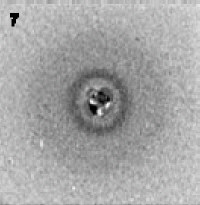The maximum speed at which data can be recorded onto a magnetic medium is at least a 1000 times slower than previously believed according to physicists in the US and Russia (I Tudosa et al. 2004 Nature 428 831). The result – which was obtained using a high-energy electron beam at the Stanford Linear Accelerator Center (SLAC) -- could have implications for future ultrahigh density data storage devices.

Magnetic recording relies on using an applied magnetic field to reverse the magnetisation of a piece of magnetic material. The speed at which data can be written depends on how quickly the applied field can reverse the magnetisation of a grain of the material. However, basic physics means that the maximum speed is much lower than previous estimates according to researchers at the Stanford Synchrotron Radiation Laboratory (SSRL), SLAC, the Landau Institute for Theoretical Physics in Russia, and Seagate Technology.
Joachim Stöhr of SSRL and colleagues used the magnetic field associated with ultrashort bunches of high-energy electrons from the two-mile long linear accelerator at Stanford to study how quickly the magnetisation of a grain can be reversed. The pulses have a magnetic field strength of about 10 Tesla and last for just 2 picoseconds (2 x 10-12 seconds).
The researchers fired the pulses through different magnetic recording materials and observed the images that were produced. They expected to see well-defined dark and light areas arranged in co-centric rings around the focal point of the pulse beam. These areas would correspond to magnetic grains being magnetised in one of the two possible directions – 1 or 0. However, they only saw diffuse shades of grey (see figure 2).
According to Stöhr and co-workers, this indicates that some grains had switched and others had not. This means that 2 picoseconds is not long enough to allow a bit to be recorded reliably, and this places an upper limit on the recording speed. The team says the data are characteristic of a chaotic system, but such behaviour was only expected to appear with femtosecond (10-15 seconds) pulses. The maximum recording speed is therefore at least a 1000 times slower than previously thought. The result could help physicists understand more about the basic nature of magnetic recording and possibly lead to new types of recording media.




